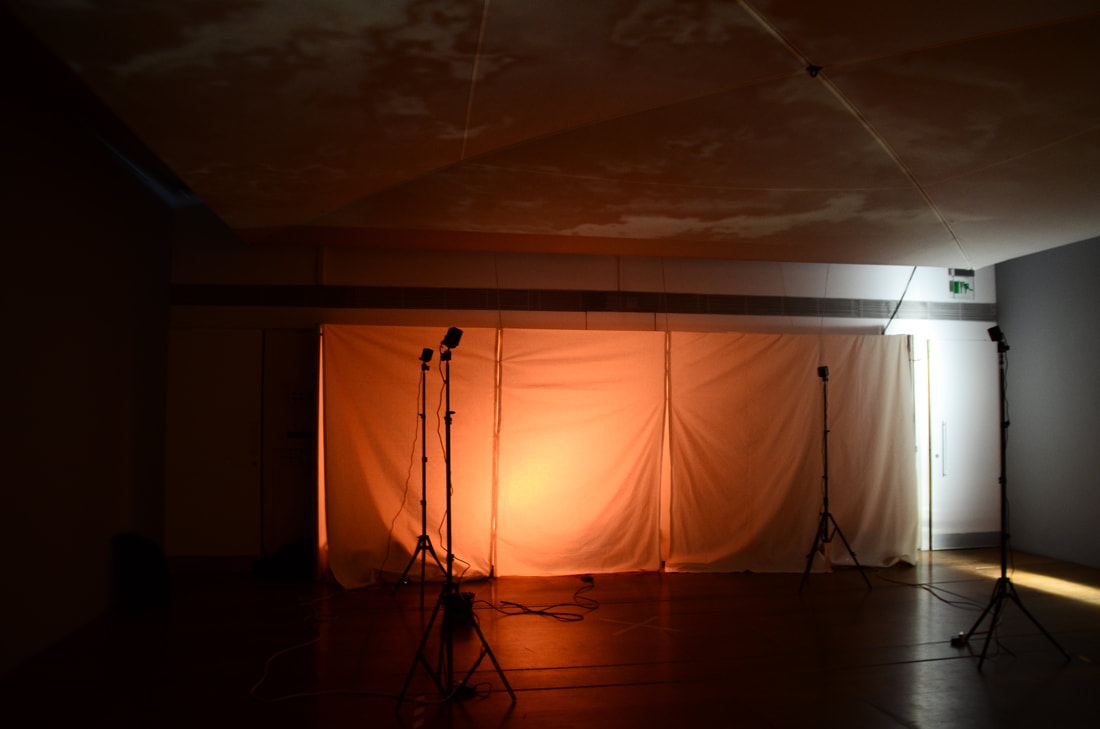Sound | Installation | Andante (2019)
Andante (2019)
Dulwich Picture Gallery
Harald Sohlberg: Painting Norway
4 channel sound installation with VR experience
Andante (2019)
Dulwich Picture Gallery
Harald Sohlberg: Painting Norway
4 channel sound installation with VR experience
'Rather than thinking of ourselves only as observers, picking our way around the objects lying about on the ground of a ready-made world, we must imagine ourselves in the first place as participants, each immersed with the whole of our being in the currents of a world-in-formation: In the sunlight we see in, the rain we hear in and the wind we feel in. Participation is not opposed to observation but is a condition for it […]’
- Tim Ingold
T. Ingold, Being Alive: essays on movement, knowledge and description. London : Routledge, 201, p. 129


Andante (2019)
is an audio-visual installation using virtual reality to explore indirect interactions in digital landscapes, inspired by Norwegian painter Harald Sohlberg’s nature paintings.
The word “andante”, particularly common in classical music, is described as “at a walking pace”. “Andante” comes from the verb “andare” (“to go”). The sense of movement was expressedthrough subtle changes of visual or sonic elements, emerging or disappearing slowly. The interactions within the VR experience were minimalistic, only activated through gazing when participant shift their attention between the foreground and the background. This approach was adopted from finding parallel metaphors between Sohlberg’s painting techniques and sonic interpretations:
is an audio-visual installation using virtual reality to explore indirect interactions in digital landscapes, inspired by Norwegian painter Harald Sohlberg’s nature paintings.
The word “andante”, particularly common in classical music, is described as “at a walking pace”. “Andante” comes from the verb “andare” (“to go”). The sense of movement was expressedthrough subtle changes of visual or sonic elements, emerging or disappearing slowly. The interactions within the VR experience were minimalistic, only activated through gazing when participant shift their attention between the foreground and the background. This approach was adopted from finding parallel metaphors between Sohlberg’s painting techniques and sonic interpretations:
“Sohlberg captures the essence of his ‘Subjective mood in nature’ whilst ‘foreground transmutes abruptly into background to heighten a sense of unreality.’
(T. Gunnarsson, Nordic Landscape Painting in the Nineteenth Century [1998). New Haven, Conn. ; Yale University Press. P. 214-216)
The experience of sound installation installed outside of the VR explored “anti-immersion”. The 4-channel speaker system was set up unconventionally, drawing the audience away from the central sonic “sweet spot” and facing towards the periphery. Instead of hearing a continuous soundscape, the audience experienced many layers of the installation and interacted with the the acoustic architecture physically by walking around. The soft lit space and minimal sounds in the space gently directed the audience to lower their voices. It was a transformative space that guided the audience to tune into their senses before entering the virtual space.